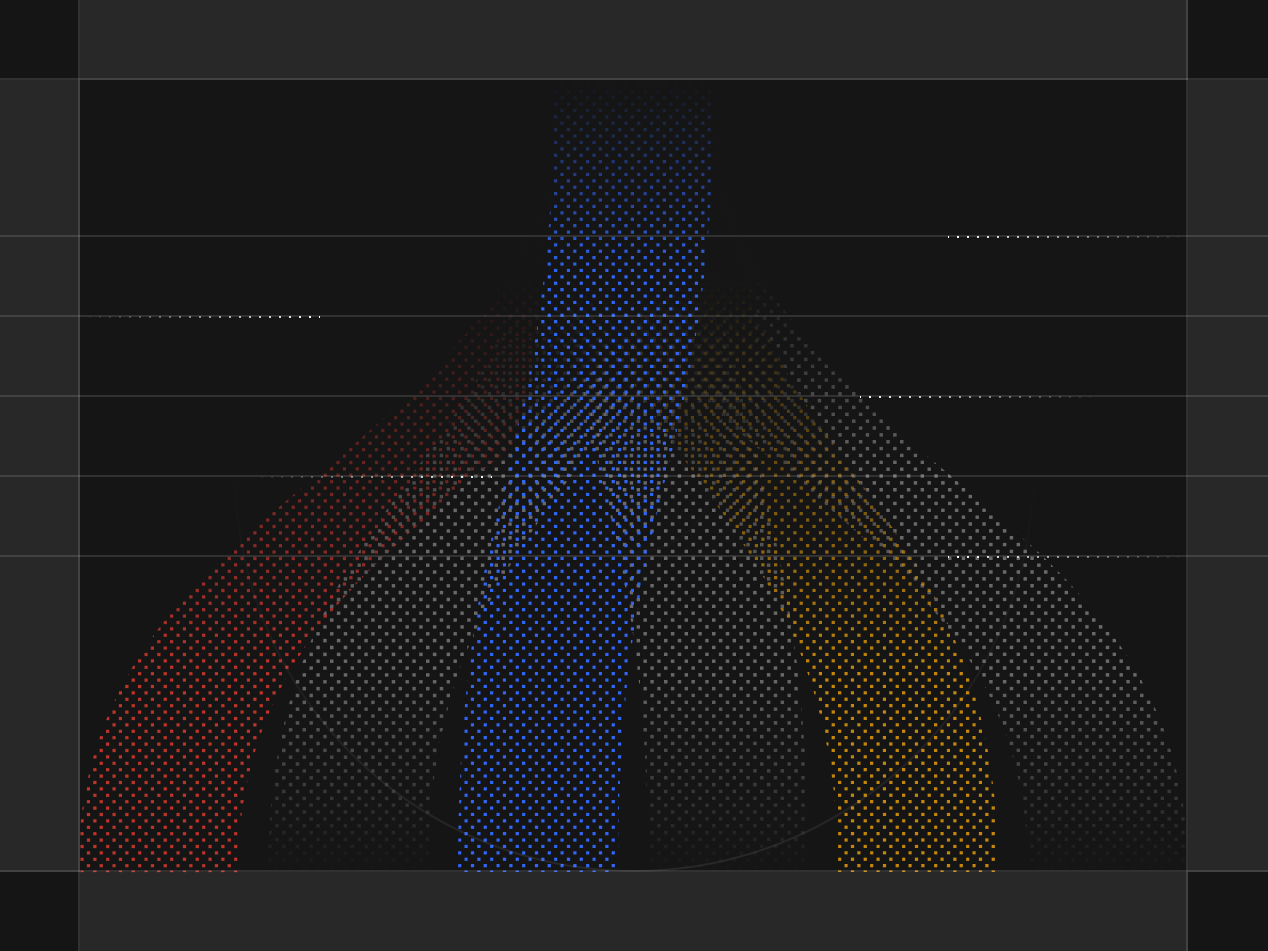Optimizing Your Website Content for AI Search Engines: How to Effectively Boost Conversion Rates
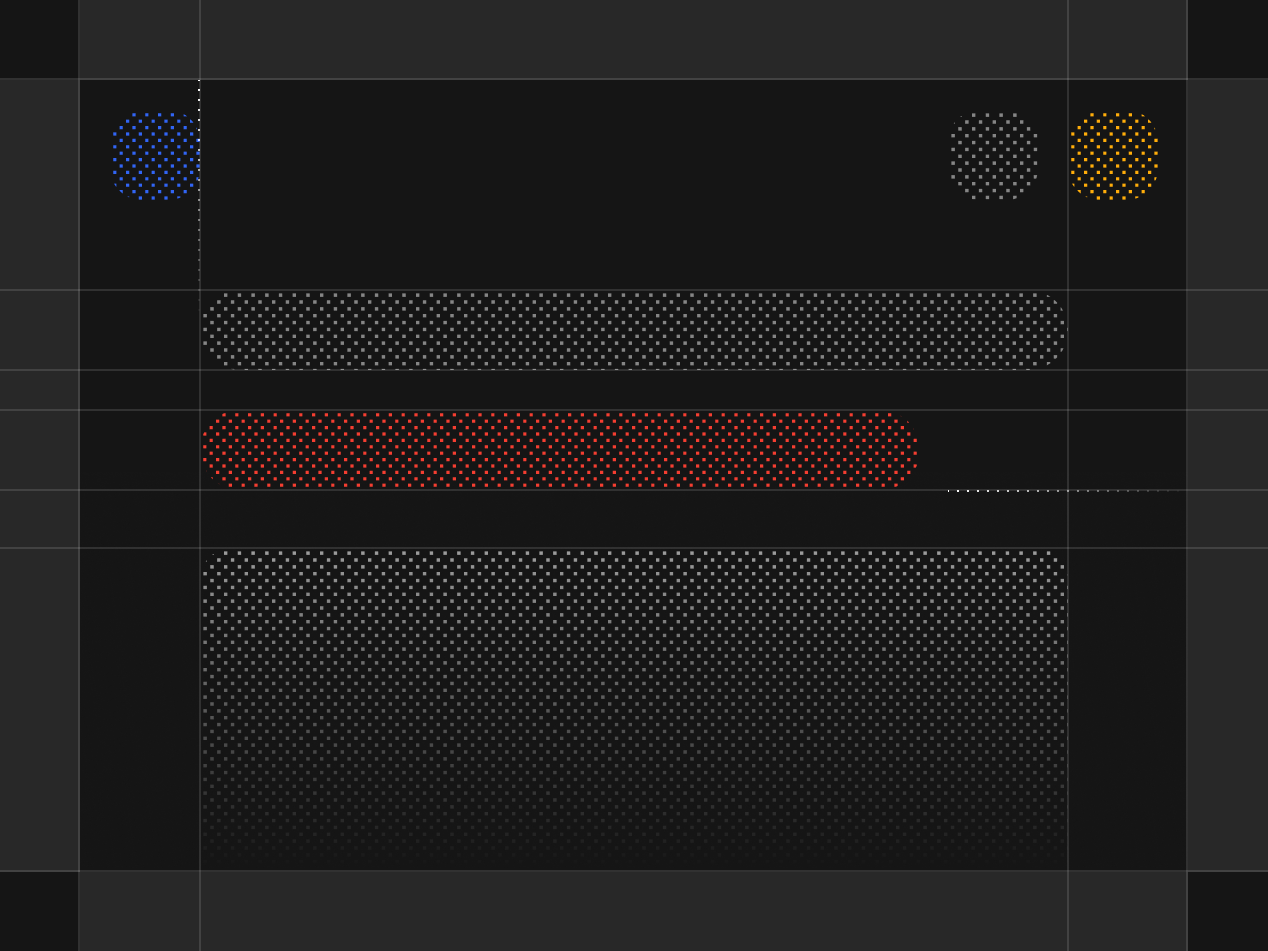
Over the past year, AI search engines like ChatGPT, Perplexity, and Bing AI have begun to change how people discover brands online. Instead of scrolling through 10 blue links on Google, users now get curated answers directly inside conversational interfaces. That shift means companies need to rethink how they structure, distribute, and monitor their content.
Why AI search matters for conversion, not just visibility
Traditional SEO chases ranking. AI search distributes trust. When a user asks a question, they often see a single synthesized answer. If your content is cited or your brand is mentioned, you earn disproportionate attention. The goal is not traffic for its own sake. The goal is to influence qualified buyers at the moment of intent and move them to a clear next step.
What changes in an AI search world
- Fewer results, more synthesis. You must be quotable, citable, and easy to reuse.
- Credibility beats volume. Clear, narrowly scoped, and well supported pages are more useful than generic long reads.
- Distribution happens across formats. YouTube, Reddit, and Wikipedia often appear in answers. Your plan should treat them as first class channels.
What recent data suggests about AI search behavior
Use these directional takeaways to shape your plan. The specific percentages below are from a recent study.
- Relevance and quality beat raw traffic. ChatGPT and Perplexity often reference low traffic sites. About 44.88% of links in Perplexity and 47.31% in ChatGPT go to sites with minimal traffic. New sites can surface if the content is clear, useful, and well structured.
- Domain age patterns differ by engine. ChatGPT and Bing frequently use younger domains, often under 5 years old. Google AIO skews older, with 49.21% of links going to domains older than 15 years. If you are new, prioritize Bing and ChatGPT tactics while you build long term authority for Google.
- Bing prefers short, direct answers. Average response length is about 398 characters with about 3.13 links per answer. Write concise, plain language summaries that can be quoted.
- YouTube and user generated sources matter. ChatGPT links to YouTube in about 11.30% of answers, Perplexity in about 11.11%. ChatGPT often cites Reddit and Wikipedia. Create helpful video content, contribute responsibly to community sources, and use clear references on your pages.
- Diversify your cited sources. ChatGPT and Perplexity overlap in their domains by about 25.19%, and both pull from a wide set. Bing often references practical sites such as WikiHow, and also health oriented sites like Healthline. A broader reference strategy helps your pages appear alongside familiar authorities.
- Balance keywords. Niche and specific keywords increase the odds of citation in ChatGPT and Perplexity where less popular domains can win. Target your content to answer the questions that real buyers ask.
These signals are directional. You do not need to memorize the numbers. You need to shape content so that it is reusable by AI systems and persuasive to humans.
Strategy pillars
- Relevance and clarity
- Write to a single search intent per page.
- Lead with an answer, support with proof, then add depth.
- Use descriptive headings, short paragraphs, and lists that AI can parse.
- Channel fit by engine
- For Bing: short, simple answer blocks, minimal jargon, clear definitions, and practical steps.
- For ChatGPT and Perplexity: authoritative walkthroughs with citations to credible, diverse sources and helpful visuals.
- For Google AIO: long term credibility, consistent terminology, stable URLs, and evidence of expertise over time.
- Format portfolio
- Text pages that answer specific questions.
- YouTube videos with transcripts and chapters.
- Wikipedia involvement if appropriate and compliant with policies.
- Reddit participation in relevant communities.
- Ethical participation
- Follow rules for Wikipedia and Reddit. Disclose affiliations where required.
- Avoid spam and contribute useful information that stands on its own.
- Conversion alignment
- Every page and post should include a logical next step.
- Offer checklists, calculators, templates, or short demos.
- Build credibility before a call to action.
Tactically Putting It Into Practice
Here’s where companies often hit a roadblock: creating and distributing this volume of content consistently across multiple platforms. That’s where automation helps.
Cassidy-enabled workflows that reduce manual effort
Automation helps you keep up with the surface area of AI search while staying on brand. The following workflow recipes are examples. They are useful even if you build them in a different tool. Cassidy makes them easy to connect to your systems and to run on a schedule. Book a demo call with us to see the following workflows in action!
Workflow 1: Reddit brand mention monitor and guided engagement
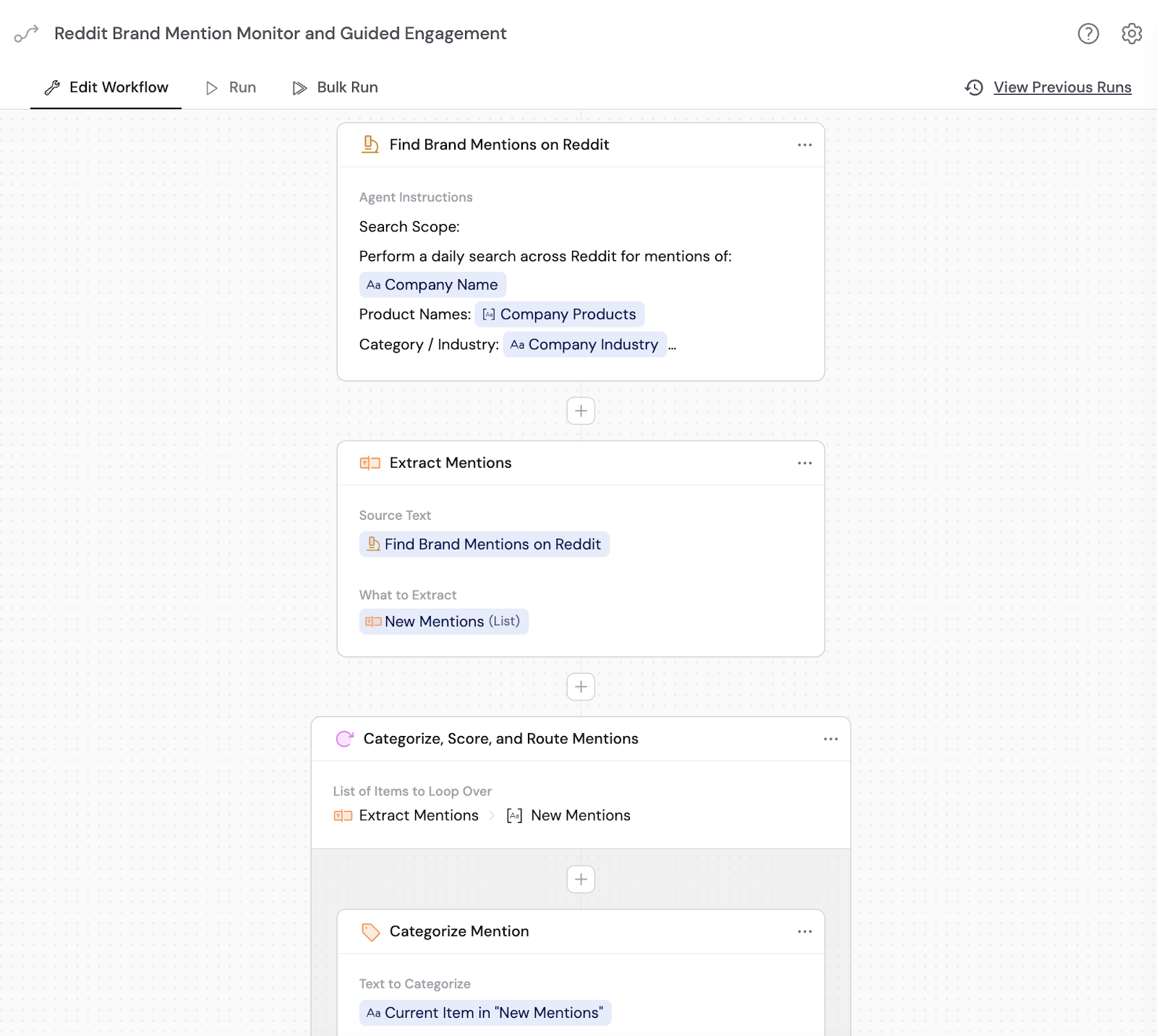
Goal: Identify brand mentions on Reddit and prepare helpful, non promotional replies.
Trigger: Hourly or daily search across relevant subreddits for your brand name, product names, and category keywords.
Inputs: Keyword list, list of allowed subreddits, brand voice rules, compliance guardrails.
Steps
- Fetch new threads and comments that match filters.
- Classify intent. Examples: product comparison, how to, troubleshooting, procurement, off topic.
- Score priority by reach, subreddit relevance, and recency.
- Draft a reply that follows the response rubric. Include sources and a link to a neutral resource first.
- Route to a human for final review and posting.
Output: Suggested replies in Slack or email with direct links. Status tracked in a simple dashboard.
Guardrails
- Respect subreddit rules. Do not mass post. Always disclose affiliation if required.
If you want to see this in action live, book a demo with us.
Workflow 2: Blog to social to Reddit distribution
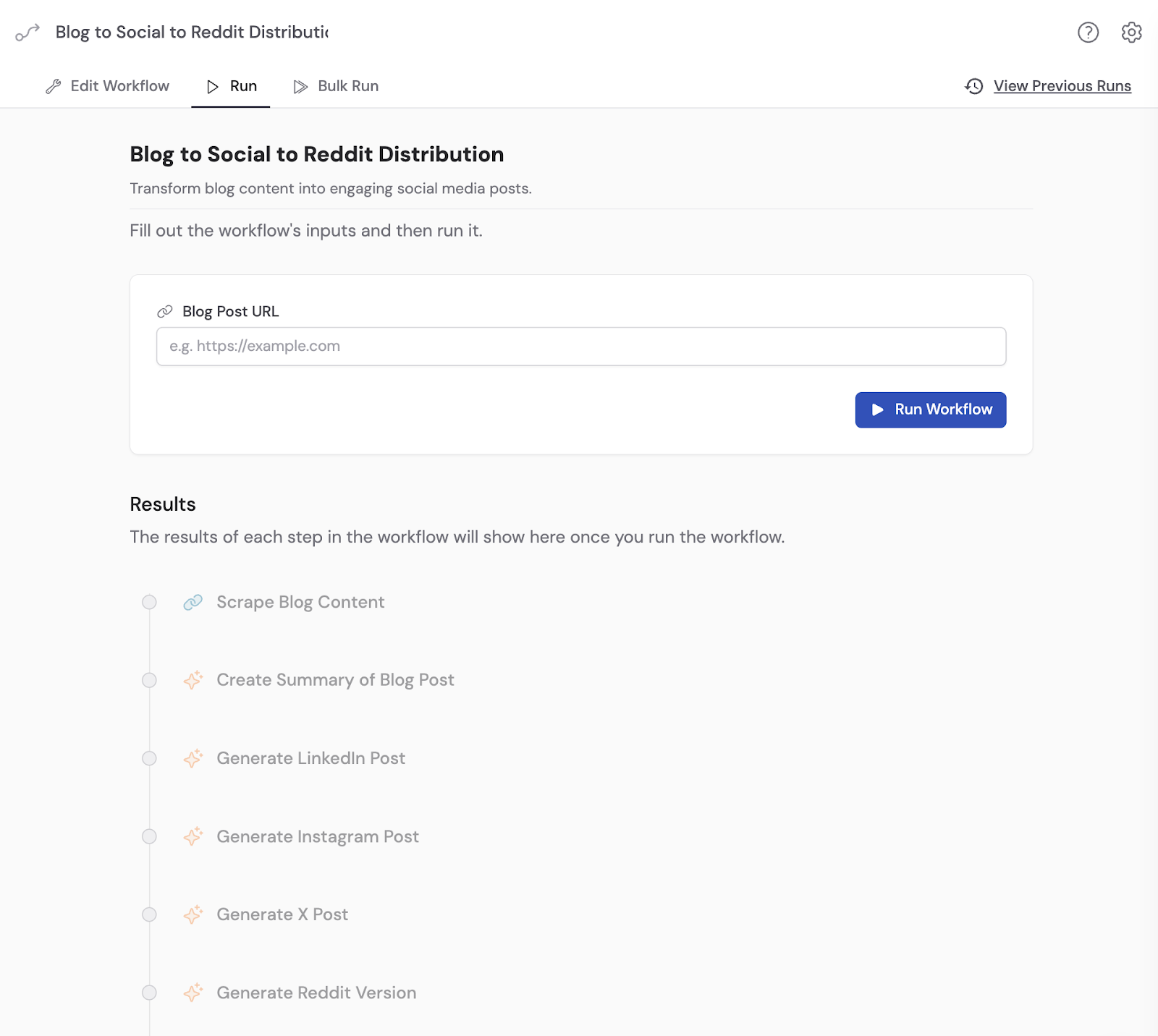
Goal: Repurpose every blog post into short posts for LinkedIn, X, and suitable Reddit communities.
Trigger: New post published or updated.
Inputs: Blog URL, summary paragraph, three key takeaways, two external citations to include as context.
Steps
- Generate one LinkedIn post, one Instagram post, and one X post that summarize the main lesson.
- Generate a Reddit friendly version that removes promotional language and adds a neutral resource.
- Create UTM tagged links for attribution.
- Schedule posts and alert owners for manual Reddit posting where rules require human participation.
Output: Platform ready drafts with tracking links and a checklist for the human poster.
If you want to see this in action live, book a demo with us.
Workflow 3: Category question monitor for weekly outreach
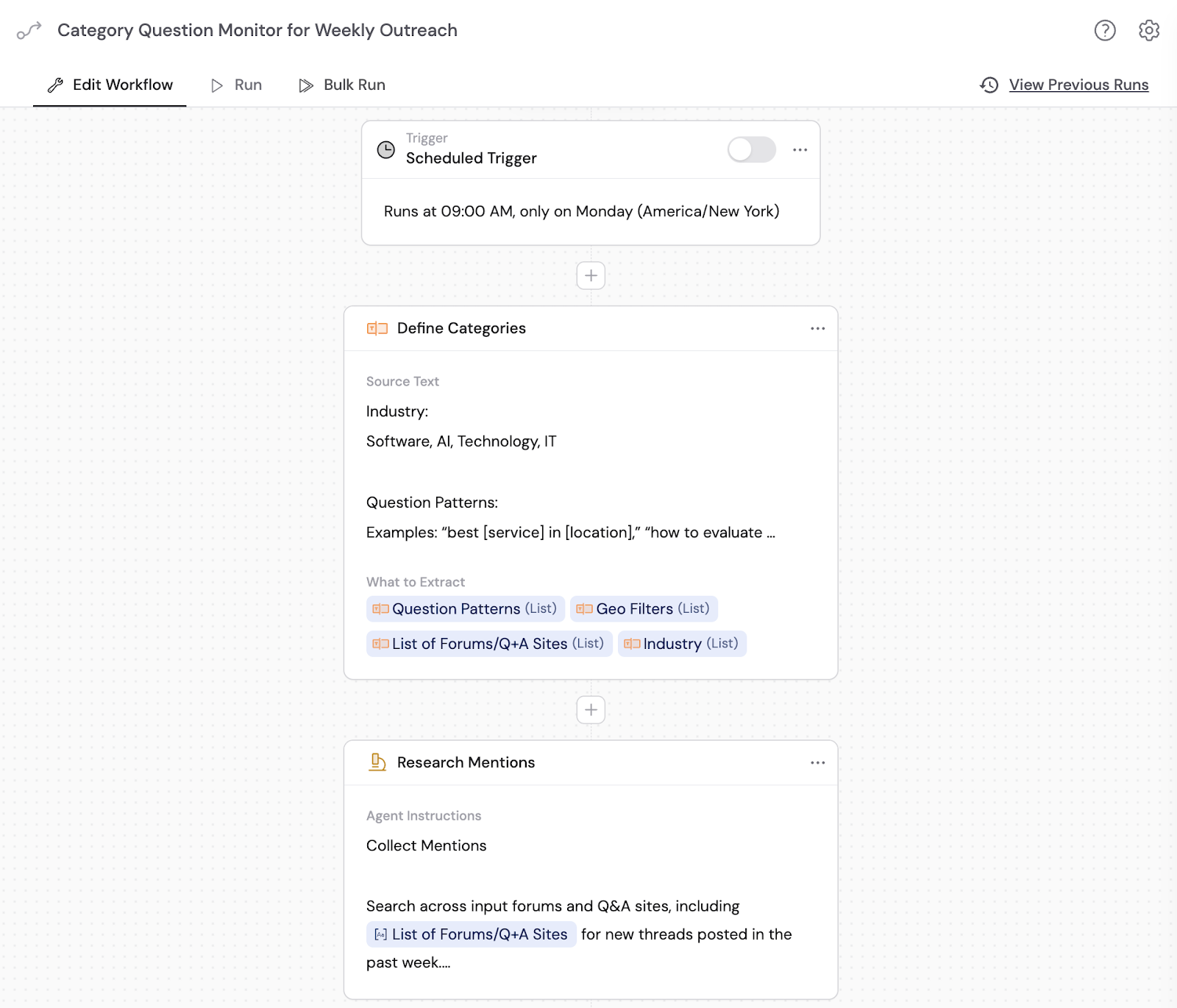
Goal: Track recurring high intent questions such as “best HVAC company in Houston” or “how to evaluate RFP automation.”
Trigger: Weekly scheduled run.
Inputs: Question patterns, geo filters, list of forums and Q and A sites.
Steps
- Collect new threads that match patterns.
- Summarize the question and current best answers.
- Suggest a helpful contribution that cites neutral sources. Include a short disclosure line.
- Propose a one paragraph answer block and a link to a non promotional guide.
Output: A short brief per thread with suggested text. Owner can post or adapt.
If you want to see this in action live, book a demo with us.
Workflow 4: YouTube topic radar and script draft
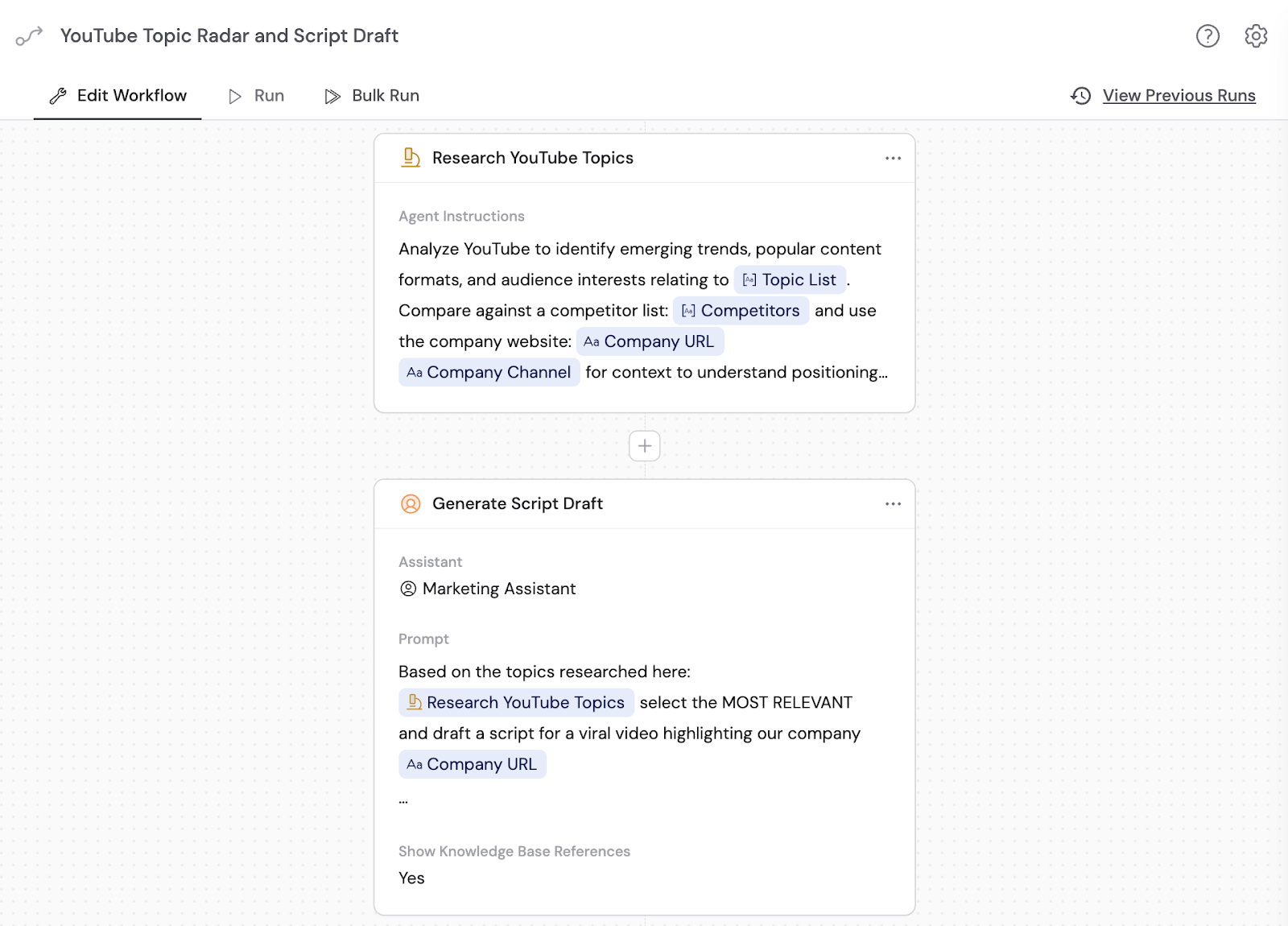
Goal: Publish videos that align with high intent topics that AI engines often cite.
Trigger: Weekly or biweekly scheduled run.
Inputs: Topic list, competitors, associated blog posts, brand voice.
Steps
- Identify trending questions and gaps in your library.
- Propose a title, a hook, and a 5 step structure.
- Draft a script with on screen prompts and a CTA.
- Generate a blog companion outline and cross links.
Output: A script draft and outline ready for recording and publishing.
If you want to see this in action live, book a demo with us.
Conclusion: The New SEO Playbook
AI search engines are not replacing SEO—they’re rewriting the rules. The old game of chasing rankings with keyword-stuffed content is giving way to a new model where:
- Clarity beats complexity.
- Credibility beats volume.
- Distribution beats centralization.
By focusing on relevance, diversifying your presence across platforms AI engines actually cite, and automating the grind with workflows, brands can not only be seen—they can be trusted. And trust at the point of intent is what drives conversions.
Facts and figures courtesy of https://seranking.com/blog






